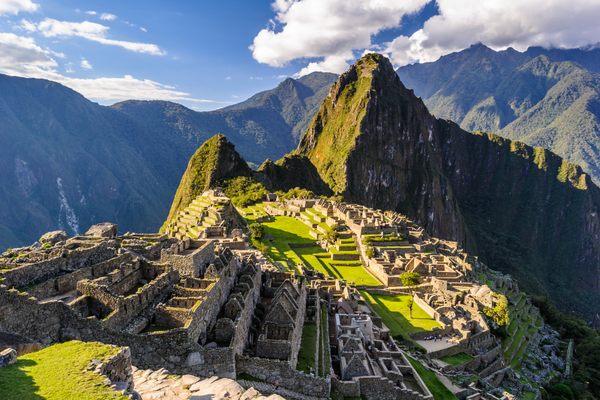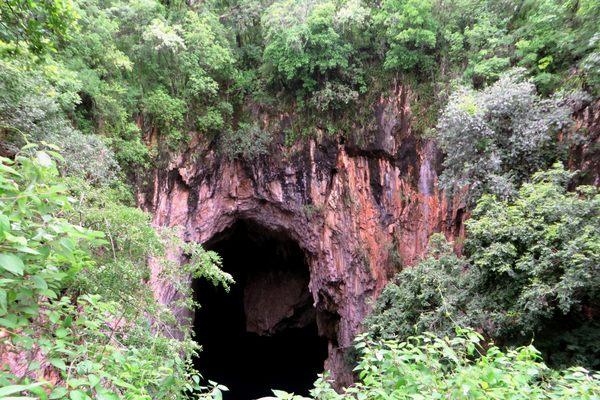Cueva de Las Lechuzas
A jungle cave in Peru of unknown depths, otherworldly sounds, and strange nocturnal birds that navigate by echolocation.
An overwhelming cacophony of clicks and chirrups and other strange sounds surround you when you stand inside the Cueva de Las Lechuzas. This gaping cavern is the entry point to a more extensive and largely unexplored cave system, and is home to stalactites, stalagmites, insects, bats and, most intriguingly, nocturnal oilbirds that navigate using echolocation.
The Cueva de Las Lechuzas (Cave of the Owls) is located inside Tingo Maria National Park, one of the oldest national parks in Peru. Few foreign tourists make it to this part of the country, but those that do soon hear of the so-called owl cave and its strange inhabitants, after which it is erroneously named.
The cave is actually home to a colony of some 3,000 oilbirds (Steatornis caripensis), which local residents initially confused with owls. Apart from their shared love of the night, these two species have little in common. Oilbirds, known locally as guácharos, are the only flying, exclusively fruit-eating, nocturnal birds in the world. And along with swiftlets, oilbirds are the only birds known to use echolocation. It’s a fairly rudimentary form of echolocation—nowhere near as advanced as in bats and dolphins—but enables them to click their way through the pitch-dark caves.
Other inhabitants of the Cueva de Las Lechuzas include bats, massive but (mostly) harmless spiders, and many more strange insects. Parrots, swallows, and hummingbirds also flit in and out of the cave entrance. The cave floor, as you can imagine, is littered with bird droppings. Thankfully, a wooden walkway leads over the squidgy ground and almost to the rear of the cavern.
You’ll pass numerous stalagmites and stalactites as you head into the cave. One stalagmite, located just inside the cave entrance, is known as “The Thinker” due to its resemblance, at least from some angles, to Auguste Rodin’s famous sculpture.
Only serious spelunkers should head far beyond the end of the walkway. Since 1972, various expeditions, first from the United Kingdom and then consecutively Peru, Spain, and Holland, have surveyed the cave. But as things currently stand, and despite a general consensus that the system is far more extensive, cavers have only penetrated the first 400 meters (about 1300 feet). Locals also tell tales of other groups who have ventured deep into the caves, never to be seen again.
The presence of Histoplasma capsulatum in the cave system makes extended exploration risky. This fungus, found in the dropping-rich soil on the cave floor, releases spores when disturbed. The spores can settle on the lungs causing histoplasmosis, otherwise known as cave disease. Or, as the locals call it, fiebre de Tingo Maria, Tingo Maria fever.
Know Before You Go
The cave entrance is just inside Tingo Maria National Park, a few miles from Tingo Maria. It’s easy to reach by mototaxi. Pay at the park entrance (a couple of dollars) and walk the short distance to the cave. If you visit the cave in the late afternoon, stick around for sunset. You might witness the entire oilbird colony fly out of the cave as night falls—a spectacular sight and sound. It’s worth taking a torch to the cave, but you should keep it aimed at the ground to avoid disturbing the oilbird colony.
Community Contributors
Added by
Edited by
Plan Your Trip
The Atlas Obscura Podcast is Back!




















Follow us on Twitter to get the latest on the world's hidden wonders.
Like us on Facebook to get the latest on the world's hidden wonders.
Follow us on Twitter Like us on Facebook